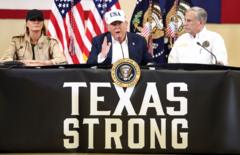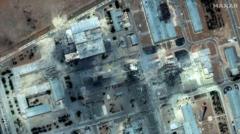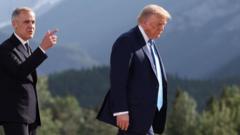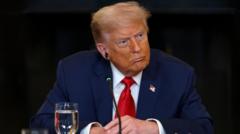In a bold move reminiscent of his earlier trade practices, President Trump has warned Japan, South Korea, and five other nations of hefty tariff increases beginning next month. This decision highlights the ongoing challenges and negotiations in U.S. trade policy.
Trump Imposes New Tariff Threats on Seven Nations
Trump Imposes New Tariff Threats on Seven Nations
President Trump announced significant tariff increases for seven countries, set to take effect on August 1 unless new trade agreements are reached.
July 7, 2025, 4:44 p.m. ET—In a striking move, President Trump has informed Japan, South Korea, Malaysia, South Africa, Kazakhstan, Laos, and Myanmar that they will face elevated tariffs starting August 1 unless new trade deals are swiftly negotiated. The tariff increases could reach as high as 25 percent, aiming to reignite the discussions around U.S. trade agreements that have been stagnant in recent months.
These rates were communicated through letters sent directly to the leaders of the designated countries and broadcasted on social media. This marks a significant renewal of Trump’s previous tactics of trade brinkmanship, which also include threats of retaliatory measures against any nations attempting to counteract with their own tariffs.
Previously, Trump had introduced a stringent set of tariffs back in April but delayed their implementation for 90 days in hopes of securing advantageous agreements. However, as the negotiation deadline looms and minimal progress has been made, Trump aims to reinstate these tariffs with fresh demands.
The imminent tariffs will particularly impact Japan and South Korea, which together comprise around 4 percent of U.S. imports; they will be subjected to a 25 percent tariff. Myanmar, despite its minor role in U.S. imports, will contend with a significant tariff hike to 40 percent.
Moreover, Trump’s threats go further – any retaliatory actions from these nations or attempts to circumvent the tariffs via alternative shipping routes could prompt even steeper tariff hikes. Over the coming days, additional countries may receive similar notifications as the White House chases a new vision for international trade relations.
Reporters Christine Zhang and Tony Romm contributed to the analysis of this developing story, shedding light on the complex negotiations and economic implications of Trump’s latest tariffs.
These rates were communicated through letters sent directly to the leaders of the designated countries and broadcasted on social media. This marks a significant renewal of Trump’s previous tactics of trade brinkmanship, which also include threats of retaliatory measures against any nations attempting to counteract with their own tariffs.
Previously, Trump had introduced a stringent set of tariffs back in April but delayed their implementation for 90 days in hopes of securing advantageous agreements. However, as the negotiation deadline looms and minimal progress has been made, Trump aims to reinstate these tariffs with fresh demands.
The imminent tariffs will particularly impact Japan and South Korea, which together comprise around 4 percent of U.S. imports; they will be subjected to a 25 percent tariff. Myanmar, despite its minor role in U.S. imports, will contend with a significant tariff hike to 40 percent.
Moreover, Trump’s threats go further – any retaliatory actions from these nations or attempts to circumvent the tariffs via alternative shipping routes could prompt even steeper tariff hikes. Over the coming days, additional countries may receive similar notifications as the White House chases a new vision for international trade relations.
Reporters Christine Zhang and Tony Romm contributed to the analysis of this developing story, shedding light on the complex negotiations and economic implications of Trump’s latest tariffs.





















